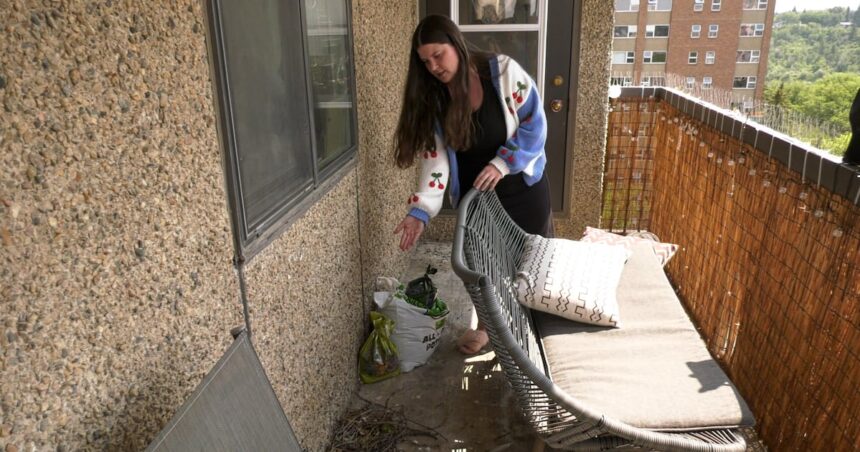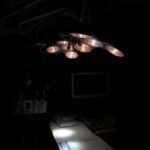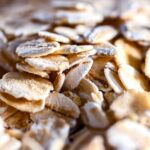A Saskatoon mother is sounding the alarm on a potentially dangerous pigeon infestation that has taken up residence above her family’s apartment, creating what she describes as an urgent health hazard for her immunocompromised toddler.
Kirsten Schroeder, who lives in a Confederation Drive apartment complex with her two-year-old son Emmett, has been battling what she calls a “nightmare situation” for months. Pigeons have established nests in the building’s eaves directly above their unit, with droppings accumulating daily outside their door and windows.
“Every morning, I’m cleaning up fresh droppings before my son can step outside,” Schroeder told CO24 News. “It’s not just disgusting—it’s genuinely dangerous for Emmett, who has respiratory issues and a weakened immune system due to his premature birth.”
Health experts confirm Schroeder’s concerns are well-founded. Dr. Melissa Hanson, an infectious disease specialist at the University of Saskatchewan, explains that pigeon droppings can harbor dangerous pathogens.
“Pigeon excrement can contain fungi like Cryptococcus and bacteria that cause psittacosis, which are particularly threatening to people with compromised immunity,” Dr. Hanson said. “Young children with developing immune systems or individuals with pre-existing conditions face heightened risk from these exposures.”
Despite multiple complaints to her property management company since February, Schroeder says meaningful action has been slow to materialize. The company reportedly installed some netting in April, but according to Schroeder, the measure was insufficient and poorly maintained.
“They put up partial netting that the birds just work around,” she explained. “When I follow up, I’m told they’re ‘monitoring the situation,’ but meanwhile, my son’s health is on the line every day.”
The City of Saskatoon’s bylaws require property owners to maintain buildings free of conditions that could harbor pests or create health hazards. When approached for comment, city officials confirmed that property owners are responsible for pest management, including pigeons, and that enforcement action can be taken when properties fall below standards.
Environmental health officer James Peterson noted that while pigeons themselves aren’t classified as pests under provincial regulations, “when their presence creates unsanitary conditions that threaten public health, property owners have a legal obligation to address the situation.”
The property management company, Plains Property Management, provided a statement indicating they are “aware of the bird-related concerns and have implemented initial preventative measures,” adding that “additional remediation efforts are scheduled for next month.”
For Schroeder, next month isn’t soon enough. She’s started documenting daily conditions with photographs and has contacted the Saskatchewan Health Authority to request an inspection.
“I understand that wildlife management takes time, but this isn’t about inconvenience—it’s about my child’s health,” she said. “I shouldn’t have to choose between breaking our lease and potentially exposing my son to serious illness.”
Wildlife removal specialist Trevor Kowalski of Prairie Pest Solutions says the situation highlights a common problem in urban settings.
“Pigeons are incredibly adaptive and persistent,” Kowalski explained. “Once they establish a nesting site, comprehensive exclusion methods are required—not just partial solutions. Done properly, humane deterrents can effectively relocate birds without causing harm.”
As fall approaches with cooler temperatures, Schroeder worries that her family will be increasingly trapped indoors to avoid exposure to the contaminated areas outside their apartment.
“We already limit his outdoor time because of his health conditions,” she said. “Having to further restrict his movement and play because of preventable environmental hazards feels deeply unfair.”
The situation raises important questions about tenant rights and property owner responsibilities when it comes to environmental health hazards. How effectively are building codes and public health regulations protecting vulnerable residents, and at what point should authorities step in when property managers’ responses prove inadequate?
For more on public health issues affecting Saskatchewan communities, visit our continuing coverage on CO24 News.

























